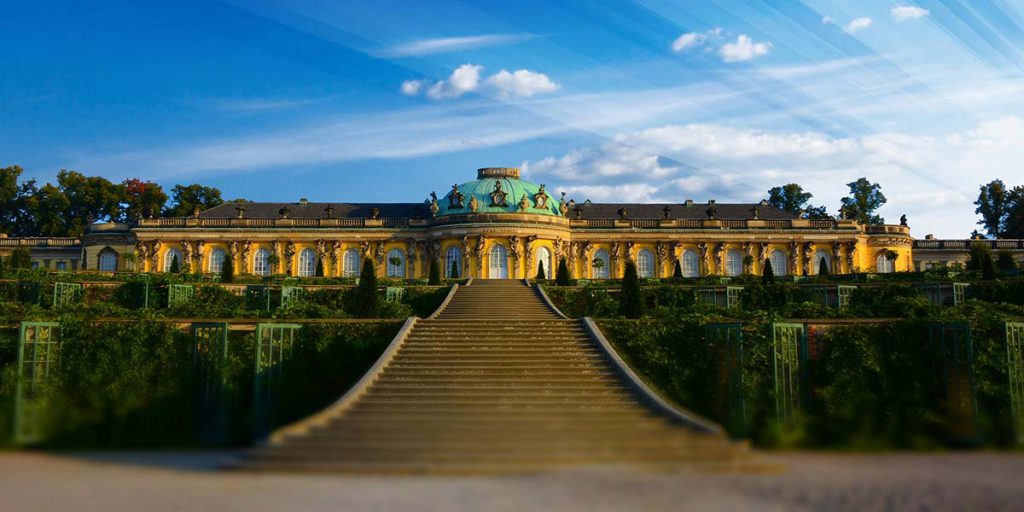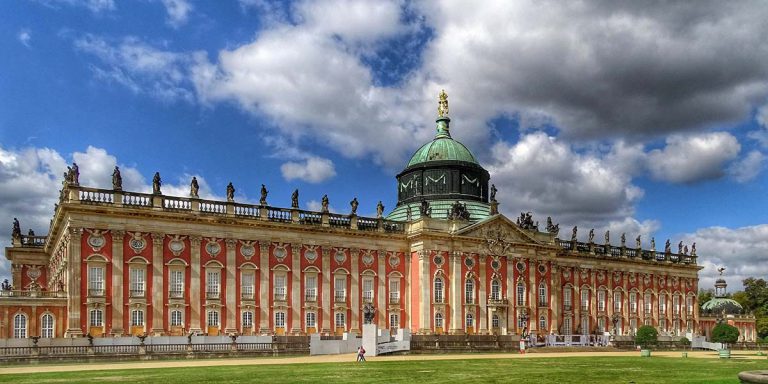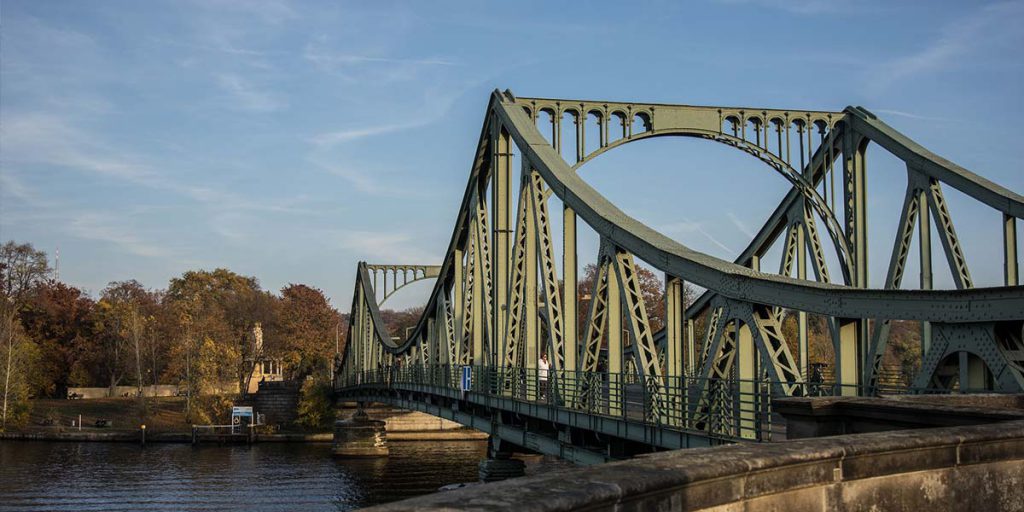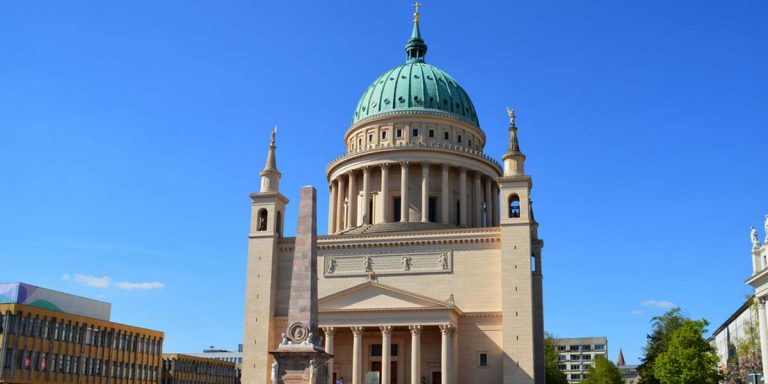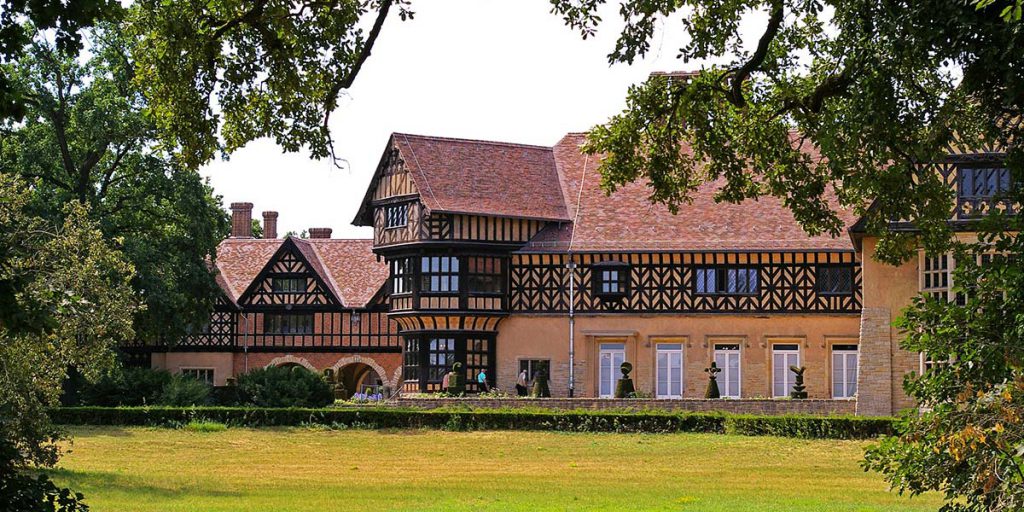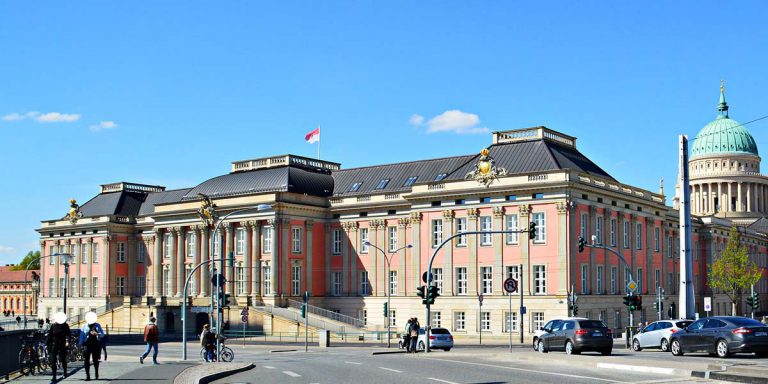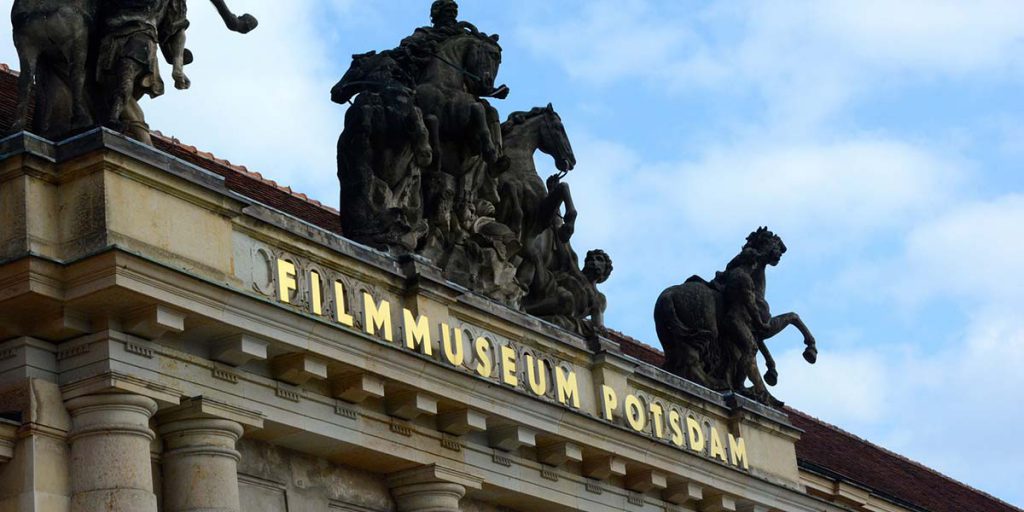Potsdam du bist dufte!
An der strategisch wichtigen Havelenge errichtete im siebten Jahrhundert der slawische Stamm der Heveller eine Burganlage. „Podstupim“ heißt auf auf sorbisch Vorposten. In einer Schenkungsurkunde des Kaisers an das Bistum Quedlinburg wurde „Potstupimi“ im Jahr 993 erstmals offiziell erwähnt. Im zwölften Jahrhundert wurden die Askanier Landesherren und gründeten die Mark Brandenburg. Sie drängten die Slawen zurück. Nach dem Aussterben der Askanier in der Region übernahmen seit Beginn des fünfzehnten Jahrhunderts die Hohenzollern die Regentschaft und bestimmten über ca. 500 Jahre die Geschicke der Region.
Mitte des siebzehnten Jahrhunderts wurde Potsdam vom „Großen Kurfürsten“ zu seiner zweiten Residenzstadt erhoben, und in der Folgezeit von berühmten Architekten und Gärtnern zu einer Kulturlandschaft umgestaltet. Es entstand der berühmte Schlosspark Sanssouci, das Holländische Viertel, der Neue Garten und vieles mehr. Nach dem zweiten Weltkrieg wurde in Potsdam Weltgeschichte geschrieben: Im Schloss Cecilienhof trafen sich die Oberhäupter der Sowjetunion, USA und Großbritanniens um eine europäische Nachkriegsordnung zu beschließen.
Mit der deutschen Wiedervereinigung wurde Potsdam Hauptstadt des wiedergegründeten Landes Brandenburg. Große Teile der Potsdamer Kulturlandschaft wurden von der UNESCO zum Weltkulturerbe ernannt.
Besuchen Sie Potsdam mit dem Magic Bus. Napoleon war auch schon da!
Natürlich gibt es noch vieles mehr zu sehen...
Habe ich Ihr Interesse geweckt?
Telefon: +49-1772224082
E-Mail: info@magic-bus-berlin.de

